Luna goddess is the Roman goddess of the moon, often associated with nocturnal magic, secrets, and mysteries. She was also believed to have the power to grant fertility and aid with childbirth.
Luna is the equivalent of Selene, the ancient Greek moon deity, and is usually depicted as a beautiful woman with a crescent moon on her forehead.
The moon has held significant cultural and religious significance for centuries, and many goddesses, including Luna, have been associated with its power and influence, and many festivals were held in their name.
Table of Contents
Who is Luna?
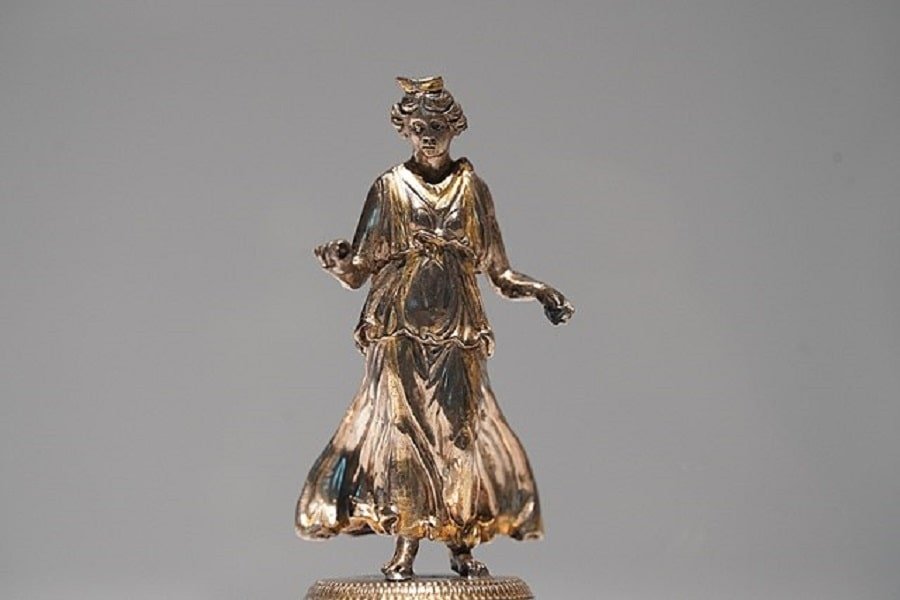
Luna is the enchanting and mysterious goddess who holds a unique position among the pantheon of Roman gods as the divine embodiment of the moon.
Within the celestial realm, she might be considered the counterbalance to her brother Sol, the sun god (Greek Helios) providing a delicate equilibrium between day and night.
As a divine being, her beauty, wisdom, and nurturing essence may have shaped the Romans’ understanding of the world and the mysteries of the cosmos.
Who knows? Perhaps Luna was the original “moonlighting” goddess, providing part-time illumination while keeping her divine identity on the low.
What Powers Does the Goddess Luna Have?
As the moon goddess, Luna might’ve possessed several powers that tethered her to the moon or its influence.
She could’ve also swayed the emotions and minds of mortals, mainly concerning matters of love and fertility, especially menstruation.
As a direct consequence of being the moon, she might’ve had the ability to control the tides, influencing the ebb and flow of the ocean, making her the patron deity of fishermen and sailors.
She also could’ve possessed the power to transform night into day, which is quite a handy trick for those late-night raging Roman parties.
What Does the Moon Goddess Represent?
Moon goddesses like Luna could’ve represented the eternal slumber of the night and its hiatus due to the moon’s illumination. She could’ve also been the tranquil beauty of the night, mesmerizing her worshippers enough to converge mere moonbeams into worthy goddesses.
She is also a symbol of femininity, awakening intuition, and renewal. And her monthly waxing and waning are responsible for inspiring countless romantic moonlit strolls and serenades in Roman and modern literature.
Luna is the female complement of the moon, and this ghostly orb in the darkness induces every feeling and thought within the Romans.
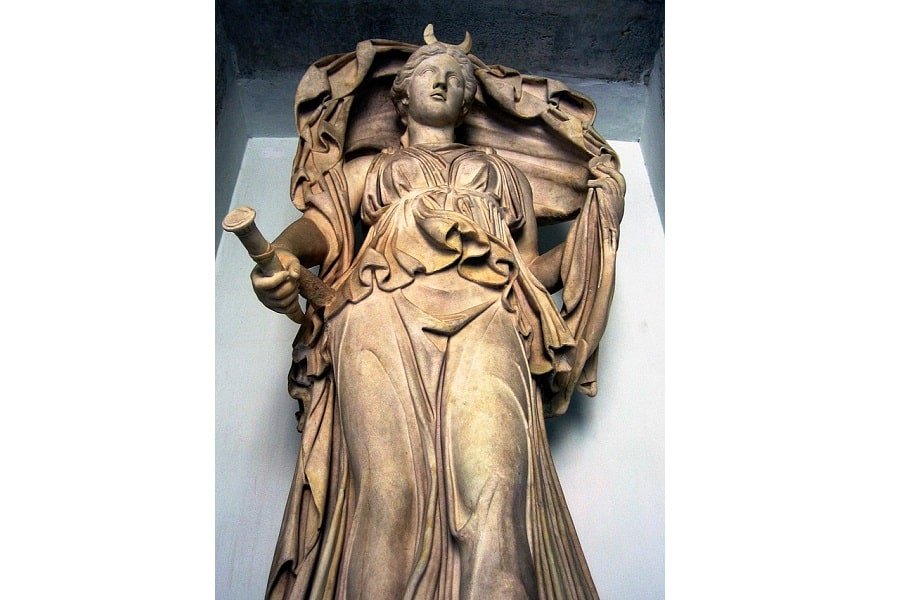
In the Name: What Does Luna Mean?
Luna’s name comes from the Latin word “lūna,” meaning “moon.” It’s a fitting name for the celestial body that casts its glow upon the Roman nightscape.
This is on par with her Greek counterpart Selene, whose name refers to the light or gleam emanating from the full moon.
And let’s be honest, being the moon goddess is one of the most incredible gigs around when it comes to night jobs.
Luna Appearance
If we were to take Luna’s human representation instead of her natural one into account, a rather poetic yet beautiful picture of this distinct goddess forms.
In her various representations across Roman art and literature, Luna is typically portrayed as a charming woman emanating a gentle, silvery glow like her Greek counterpart. Her attire often consists of a flowing white gown, symbolic of purity and the luminous nature of the moon itself. She is often attributed to riding a two-horse chariot known as the Biga.
She was typically depicted as a beautiful woman with a serene and gentle countenance and a pale face.
She was often portrayed with a crescent moon on her forehead or in her hair. Her hair was sometimes depicted as flowing or braided, and she was often shown holding a torch or a crescent-shaped scepter.
Horace, in the Carmen Saeculare, mentions Luna to be a “two-horned” queen, though it invokes beauty instead of ugliness.
Significance of Luna’s Appearance
As the goddess of the moon, Luna was seen as a symbol of this power and influence. Her appearance as a beautiful, serene woman with a crescent moon on her forehead or hair reinforces this connection.
Her gentle and peaceful countenance represented the calming influence of the moon. At the same time, her connection to the lunar cycle symbolized the cyclical nature of life.
Luna’s beauty and connection to the moon served as a powerful and significant symbol to the people of ancient Rome, reflecting their belief in the power and influence of the natural world on human life and experience.
A crescent moon frequently depicted on her head, serves both as a celestial tiara and a visual reminder of her association with the moon’s cyclical phases.
Luna’s appearance can be found in various forms of Roman art, including mosaics, frescoes, and sculptures.
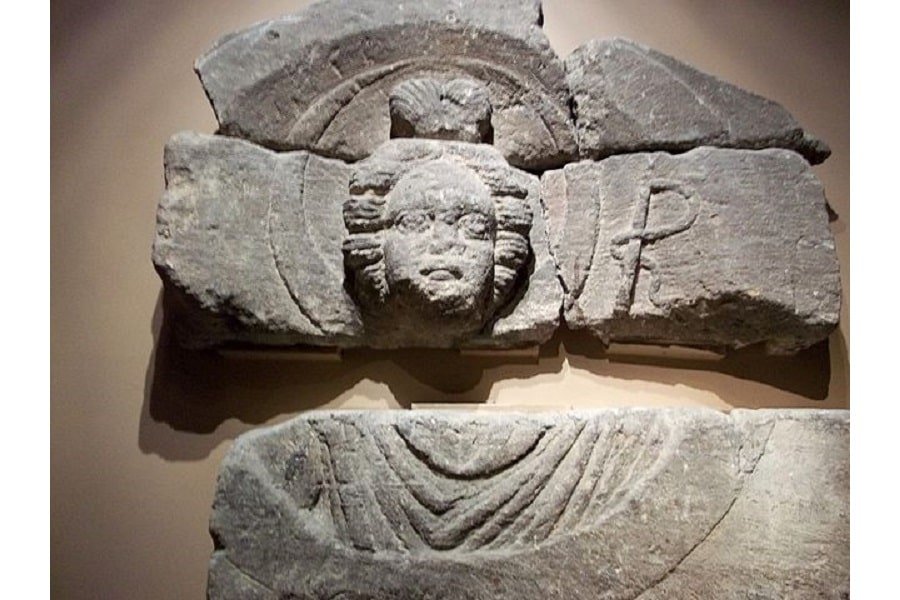
Symbols of Luna
To the people of ancient Rome, the moon’s appearance was a powerful and significant symbol. The moon was seen as a mysterious and mystical force that could influence many aspects of life.
The waxing and waning of the moon were believed to have a profound impact on the tides, the weather, and even human emotions and behavior.
She was associated with:
- Crescent moon: Signifies new beginnings, transformation, and the cyclical nature of life.
- Full moon: Symbolizes wholeness, fertility, and abundance.
- Lunar animals: Hares represent fertility and life cycles, while oxen emphasize growth and sustenance.
Besides these, the goddess of the night can be associated with countless other metaphorical meanings, such as mystery, romance, change, and eternal youth.
Meet the Family
Luna’s family connections are an intricate web of celestial relationships that reflect the universe’s interconnectedness. Her lineage is not only impressive but also filled with metaphorical implications.
Father: Hyperion, a Titan god, represents heavenly light, wisdom, and observation. As Luna’s father, this connection emphasizes the importance of illumination and clarity in her character.
Mother: Theia, the Titaness of sight and heavenly light symbolizes the beauty and brilliance of the sky. Luna’s link to Theia signifies her nature’s radiant and ethereal aspects.
Siblings: Sol, the sun god, and Aurora, the goddess of dawn, are Luna’s siblings. Together, they form a divine trinity that governs the skies, symbolizing the interconnected cycle of day and night, light and darkness, and the balance in nature.
Lovers: Luna had several lovers, including the mortal shepherd Endymion and the god Jupiter. These relationships highlight her role in connecting the divine with the earthly realms and her ability to inspire passion.
Children: Luna’s children, Pandeia, Herse, and Nemeia, embody various aspects of the moon goddess. Pandeia represents the moon’s light, Herse symbolizes the morning dew, and Nemeia signifies the sacred groves.
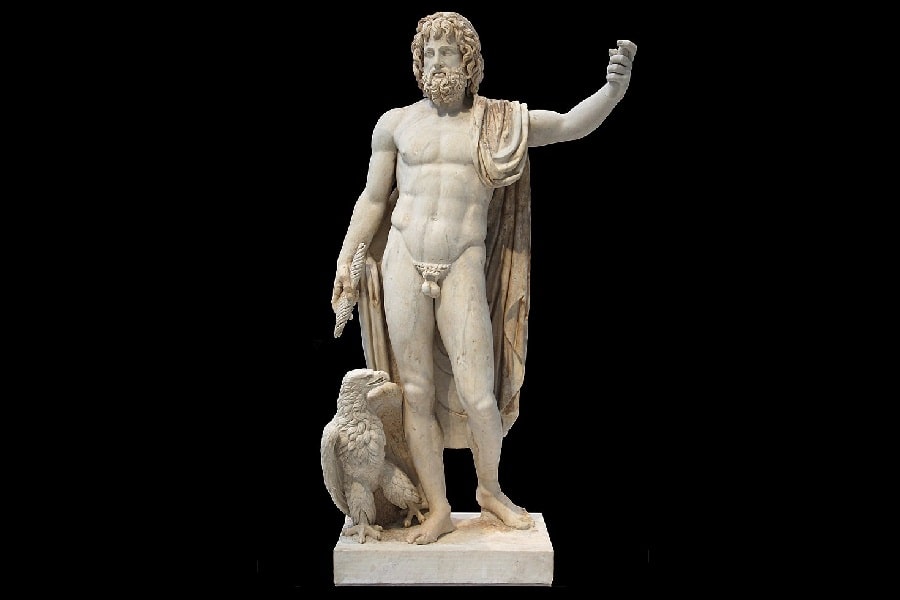
The Triple Nature of Luna Goddess
The triple nature of principal gods in religion is prevalent not only in Roman history but across almost all the primary mythologies of the world, Slavic, Celtic mythology, and Hindu included.
Luna’s association with the triple goddess archetype is a fascinating aspect of her character, as it highlights the multifaceted nature of the divine feminine. This triple-nature concept has its roots in ancient mythology. Again, it can be traced back to various cultures, including the Greeks, Romans, and Celts.
In this triad, Luna represents the mother figure. Together with Proserpina and Hecate, they form a powerful trinity embodying the different aspects of the goddess.
This divine trio is theoretically broken down into three parts involving the Maiden, the Mother, and the Crone:
Maiden: Proserpina (Greek Persephone) is the Roman goddess of spring and the Queen of the Underworld. She symbolizes youth, new beginnings, and the eternal cycle of life and death, bringing forth spring blossoming during her annual return to the Earth.
Mother: Luna, the Roman moon goddess, personifies the mother aspect. As a divine nurturer, she cares for the Earth and its inhabitants, providing light and protection during the night.
Crone: Hecate, the Greek goddess of magic, crossroads, and the moon embodies wisdom, experience, and transformation. She possesses deep knowledge and mystical prowess as a powerful sorceress and guide to the underworld.
Luna And Her Greek Counterpart, Selene
While Luna and Selene share many similarities, subtle differences reflect their societies’ cultural nuances and the broader historical context of the Roman Empire‘s conquest of Greek territories.
Similarities:
Celestial Role: Luna and Selene are the divine embodiment of the moon and its influence on the natural world, governing the night sky and affecting tides, emotions, and fertility.
Physical Appearance: Luna and her Greek counterpart are typically portrayed as stunningly beautiful women, radiating a soft, silvery light, or rarely as a half moon in the night sky. They often wear flowing white gowns and are adorned with crescent moon symbols.
Chariot: Luna and Selene are known for riding a silver two-horse chariot pulled by majestic horses, symbolizing their divine authority over the night sky.
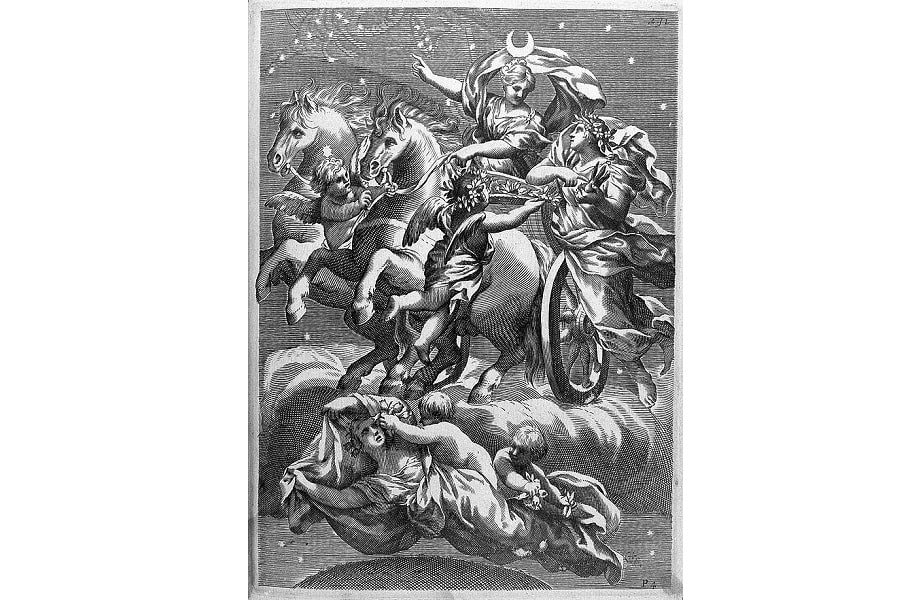
Differences:
Cultural Assimilation: As the Roman Empire conquered Greece, the Romans adopted many Greek deities, including Selene. Luna’s identity emerged as a Romanized version of Selene, reflecting the blending of two cultures.
Personality: Selene is often depicted as more serious and somber, whereas Luna tends to exude a more playful and whimsical aura, as is the case for almost all Roman depictions of Greek gods and goddesses. This difference may be attributed to the Romans’ emphasis on celebrating life and enjoying more earthly pleasures.
Mythology: While both goddesses have similar mythological stories, the Roman versions sometimes incorporate additional elements unique to their culture. For example, Luna’s relationship with her siblings, the sun Sol and Aurora, is more prominent in Roman mythology, emphasizing the divine trinity of the sun, moon, and dawn.
Luna Myths
Most of what we know about Luna comes from the blending of Roman mythology with Greek; as such, they are often the same as the stories of Selene.
READ MORE: Greek Mythology: Stories, Characters, Gods, and Culture
However, the goddess of the moon still appears in Roman literature, often as a divine orb in the sky illuminating the lands below and helping out countless deities and mortals alike in the darkness of the night.
Luna and Endymion
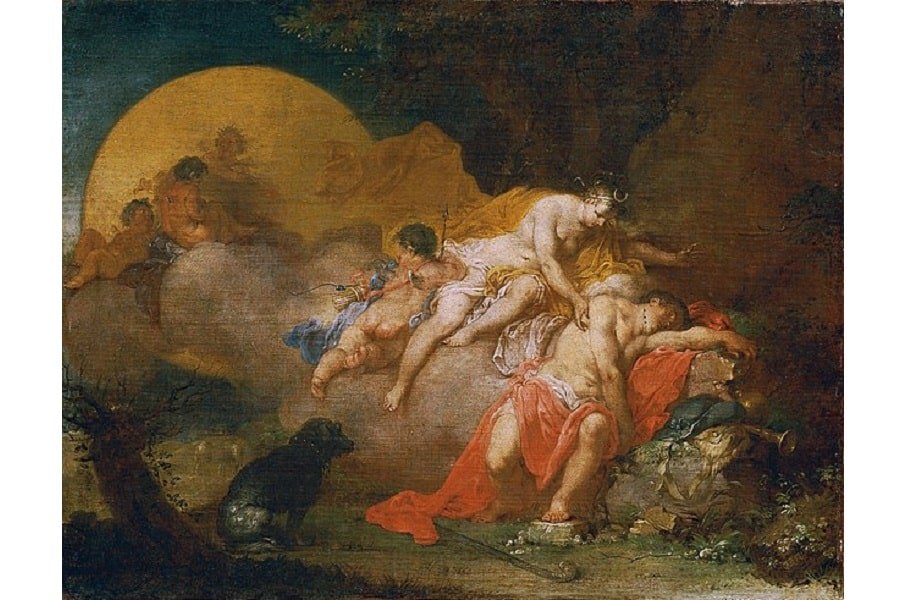
One of the most famous Luna myths is her love story with the mortal Endymion, a shepherd of unsurpassed beauty.
Luna was so smitten by him that she couldn’t resist putting him into an eternal sleep to preserve his youth and beauty. She would descend from the sky every night to visit her slumbering lover, showering him with tender kisses.
This passionate encounter between the goddess of the moon and Endymion is rooted in both the Bibliotheke and the ancient texts of Pausanias. However, the cause for Endymion’s perpetual sleep in these texts is often subjective.
Sol and Luna
Sol, the Roman god of the sun, and Luna, the Roman goddess of the moon, are the celestial power couple of the Roman pantheon. Besides their sacred duties, Sol and Luna embody metaphorical meanings that have stood the test of time, casting light on various aspects of human life and the natural world.
Marcus Terentius Varro, a Roman author, includes them in his list of visible gods, underscoring the importance of their physicality.
But let’s look deeper into the relationship between these two deities.
The Seesaw of Opposites
The most amusing metaphorical relationship between Sol and Luna is the cosmic seesaw of opposites. Sol, the sun guy, showers the Earth with warmth, light, and a much-needed tan. Luna, the moon gal, brings a sense of calm, mystery, and a silvery glow perfect for midnight strolls.
Together, they showcase life’s duality: day and night, light and dark, action movies and rom-com, the sun and the moon, conscious and subconscious. This yin and yang duo keeps the world spinning and our psyches balanced.
A Timely Roller Coaster
Another metaphorical layer of Sol and Luna’s cosmic dance is their representation of the roller coaster of time. Sol’s daily trip across the sky reminds us to take breaks between binge-watching episodes, while Luna’s monthly waxing and waning phases represent life’s ebbs and flows.
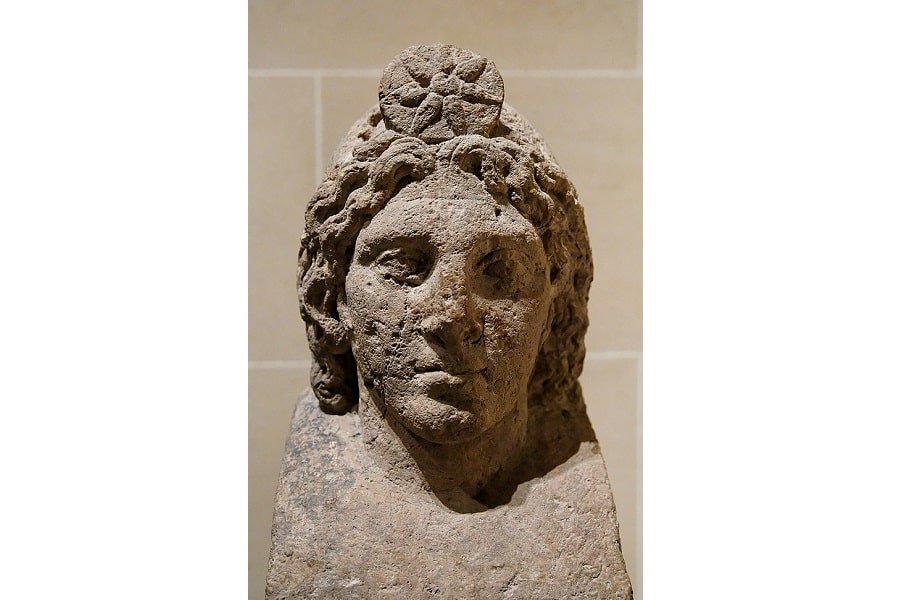
The Significance of Luna’s Chariot
Luna’s chariot is an essential part of her mythology, symbolizing her role as the guardian of the night. The two horses (or sometimes, serpentine dragons) that pull her chariot represent the waxing and waning phases of the moon, emphasizing her cyclical powers.
The chariot symbolizes her divine authority as she effortlessly glides across the heavens, lighting up the world below. She is also sometimes described as controlling a four-horse chariot, though tales of it are sparse.
Luna in Roman Society:
A goddess of her caliber was much involved in the natural rhythm of the world.
Luna played a vital role in Roman society, influencing everything from agriculture to personal lives.
The Guardian of Rome:
As the moon goddess, Luna was believed to watch over Rome, providing light and protection during the night.
This must’ve made her an important figure for travelers, ensuring their safe passage through the dark and treacherous terrain.
Menstruation:
Luna was also associated with menstruation and fertility, given her monthly cycles. Women would’ve often prayed to Luna for guidance and assistance during their time of the month, seeking relief from discomfort and the blessing of fertility.
Agriculture:
In the agricultural realm, Luna was believed to influence the growth and harvesting of crops.
Farmers often planned their planting and harvesting schedules around the moon’s phases, seeking Luna’s blessing for a bountiful yield.
Worship of Luna:
Luna’s worshippers were dedicated to honoring her through various rituals and ceremonies.
Like other moon goddesses in other religions, Luna was a significant goddess in the Roman pantheon. Her worship was widespread throughout the Roman Empire. She was revered by people from all walks of life, from commoners to the ruling elite.
Numerous temples and sanctuaries were dedicated to Luna throughout the Roman Empire, where her followers would gather to perform sacred rituals and offer prayers.
The most famous of these temples was the Aventine Hill Temple of Luna in Rome, which stood as a testament to her importance in the religious life of the ancient Romans. Unfortunately, the Great Fire of Rome was thought to have destroyed the Temple.
As “Noctiluca” (Night Shiner), she also had a shrine at Palatine Hill in Rome, according to Varro.
In addition to these architectural tributes, Luna was celebrated in various festivals, such as the Luna Noctiluca festival, held annually in her honor.

The Cult of Luna
Luna had a devoted cult following, with members paying homage to the moon goddess through offerings, prayers, and rituals. They would gather during the full moon to celebrate her powers and seek her guidance and blessings for the month ahead.
The cult of Luna also included several important festivals and celebrations throughout the year. One of the most important was the Festival of Luna. This festival was a time for worshipers to honor Luna’s power and influence over the moon. It was often celebrated with cakes, candles, and other gifts.
Another critical aspect of Luna’s cult was her association with night and darkness. Her worshipers believed she could protect them from the dangers of the night, such as robbers, ghosts, and other malevolent spirits. Many of her devotees would pray to her before sleeping, asking for her protection and guidance through the darkness.
In addition, Luna’s cult might have been associated with feminine energy, owing to her powers as a fertile mother goddess. Her worshipers believed she could offer them protection during childbirth and help them conceive healthy children.
Moon-day?
The modern word “Monday” has its roots in the Latin term “dies Lunae,” which means “day of the moon.” It’s a weekly reminder of Luna’s influence on our everyday lives, even after all these centuries.
Luna’s Counterparts In Other Mythologies
Luna’s charm can be found in various moon goddesses across cultures and mythologies. Here are a few notable counterparts and their unique quirks:
Selene (Greek) – The divine embodiment of the moon and the Greek equivalent of the goddess Luna, Selene is known for her nightly rides across the sky in a chariot pulled by white horses. Like her Roman counterpart, she has a soft spot for sleeping mortals and has been known to sneak a smooch or two!
Diana (Roman) – Though primarily the goddess of the hunt and wild animals, Diana also carries a moonlit torch. She enjoys basking in the moon’s silvery glow when she’s not busy protecting forests. She was also identified as Luna sometimes.
Chang’e (Chinese) – Chang’e, the Chinese moon goddess, has a knack for turning misfortune into fortune. After accidentally consuming an immortality elixir, she floated to the moon, where she now keeps the company of a jade rabbit, who’s quite the mixologist.
READ MORE: 15 Chinese Gods from Ancient Chinese Religion: The Eight Immortals, Dragon Gods, and More!
Artemis (Greek) – The fierce and independent twin sister of Apollo, Artemis is both the goddess of the hunt and the moon. A skilled archer, she’s never afraid to stand up for herself, even when it comes to her own brother.
Tsukuyomi (Japanese) – Tsukuyomi, the Japanese god of the moon, epitomizes elegance and grace. However, his taste for fine dining took a dark turn when he accidentally offended the goddess of food, forever banishing him to the night sky.
Hathor (Egyptian) – The fun-loving Hathor is not only the goddess of love and motherhood but also the moon. When she’s not dancing or spreading joy, she can be found lounging in the moonlight, appreciating its soothing powers.
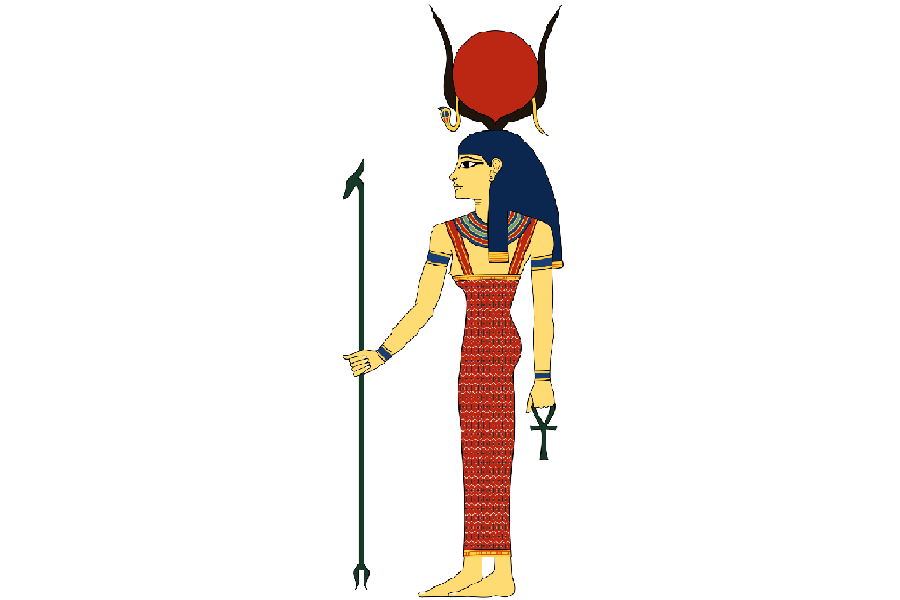
Legacy of Luna
The legacy of Luna has endured through the centuries and permeated various aspects of popular culture. Luna’s influence can be seen in everything from the names of days of the week to the continued fascination with natural phenomena like the lunar eclipse and supermoons.
Luna, alongside her fellow moon goddesses, remains a captivating figure in mythology, symbolizing the power of femininity, the passage of time, and the beauty of the night sky.
Pop culture has embraced Luna’s magnetic presence as a distinct goddess, inspiring countless works of art, literature, and music. Her indirect presence is felt in numerous movies, video games, and compositions. Even modern films like “Moonrise Kingdom” and “La La Land” pay tribute to Luna’s mesmerizing charm, showcasing the romanticism and mystery of the moonlit night.
Luna has also found her way into the world of fashion, with designers often incorporating celestial motifs in their collections, celebrating the goddess’s ethereal beauty. Moreover, the moon’s phases have become popular subjects for tattoos and jewelry designs, reflecting Luna’s deep-rooted impact on personal expression and aesthetics.
In essence, Luna’s legacy has transcended time, leaving an indelible mark on human culture and imagination. Her enigmatic appeal continues to captivate and inspire, solidifying her as a timeless symbol of mystique and femininity.
References
- https://www.perseus.tufts.edu/hopper/text?doc=Perseus:text:1999.01.0160:book=5:chapter=1
- C.M.C. Green, Roman Religion and the Cult of Diana at Aricia (Cambridge University Press, 2007), p. 73.
- https://oxfordre.com/classics/display/10.1093/acrefore/9780199381135.001.0001/acrefore-9780199381135-e-3793;jsessionid=AEE63DD152A08FF8BF6BBAC7B65B0D2B